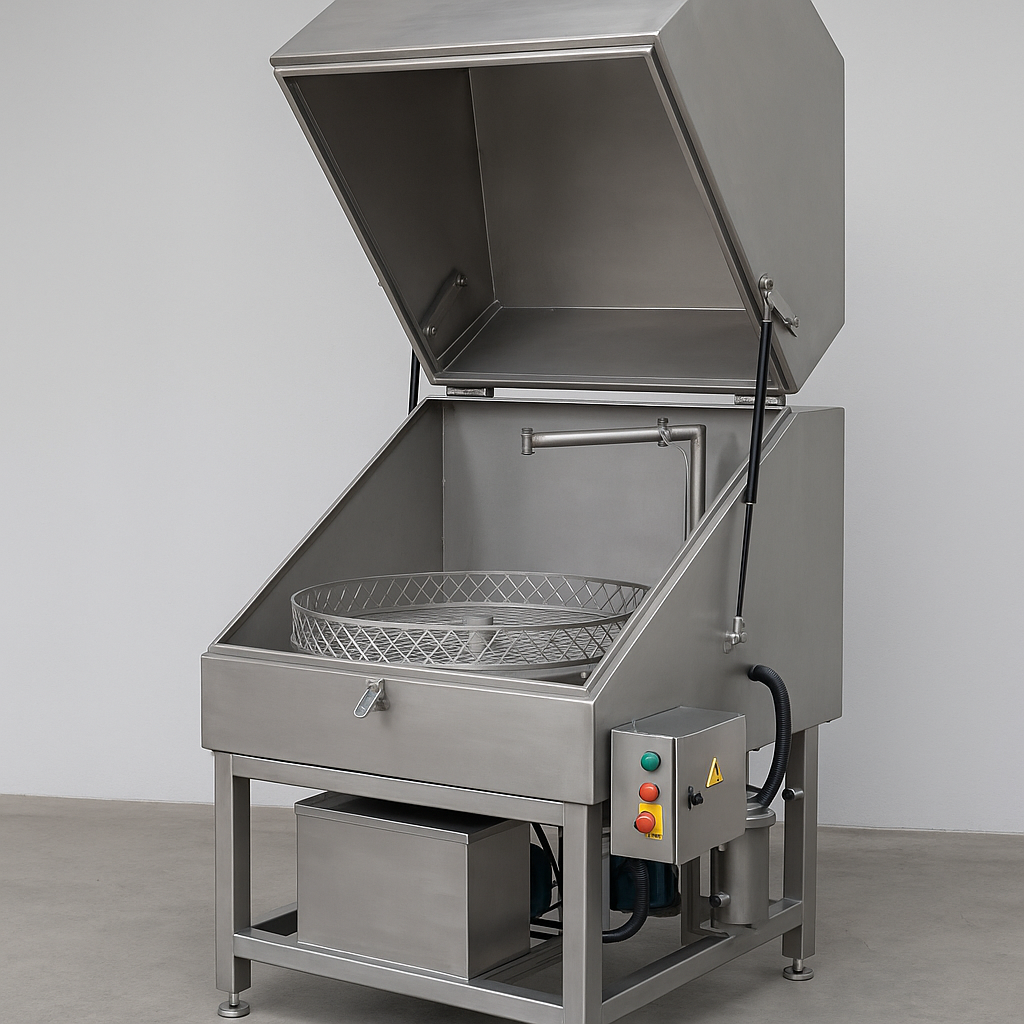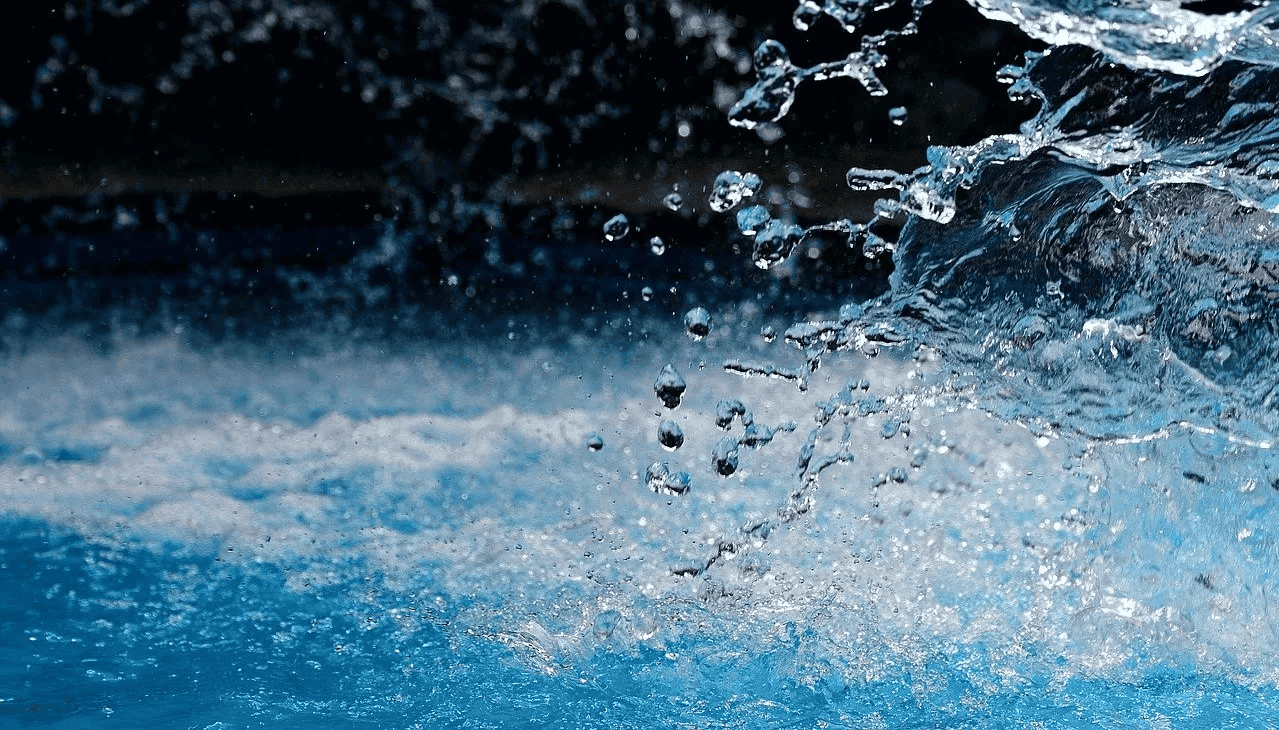This guide will walk you through everything you need to know about aqueous parts washers.
What Is an Aqueous Parts Washer?
An aqueous parts washer uses water-based cleaning solutions instead of harsh solvents to remove oil, grease, and other contaminants from industrial parts. The word aqueous simply means ‘containing water’.
These washers rely on a mix of heat, water, and detergents to do the job that older solvent-based systems once did.

How Does an Aqueous Parts Washer Work?
Most aqueous washers work on a similar principle. Dirty parts are loaded into a wash chamber or basket. Once the door is closed, jets of heated water mixed with detergent are sprayed or circulated around the parts.
The key to effective cleaning lies in four elements – often called the Sinner’s Circle:
- Time (how long the parts are washed)
- Temperature (how hot the water is)
- Chemistry (the type of detergent used)
- Mechanical Action (the pressure, agitation, or scrubbing involved)
By adjusting these four factors, you can achieve the right level of cleaning for almost any part.
What About Drying?
After the wash cycle, the parts need to be dried to prevent rust and water spots. Many aqueous systems include built-in drying options, such as hot air blowers or heated chambers.
For metal components, quick drying is important to stop corrosion. Some systems even use compressed air or vacuum drying for delicate or complex parts. The goal is to make sure the parts come out ready for the next stage – whether that’s inspection, assembly, or packaging.
What Can You Clean with an Aqueous Parts Washer?
Aqueous washers are very adaptable. They can handle everything from small engine parts to large industrial components. In fact, almost any material that can safely come into contact with water can be cleaned this way.
Common applications include:
Automotive Parts

Engine blocks, gearboxes, cylinder heads, brake components, and housings.
Aerospace Parts

Bearings, hydraulic fittings, valves, and precision assemblies.
Engineering Items

Machined parts, tools, and metal fittings.
Food Equipment

Stainless steel trays, conveyor components, and processing tools.
Because they don’t rely on solvents, aqueous systems are suitable for both metal and plastic parts.
Types of Aqueous Parts Washers
There isn’t just one type of aqueous washer. The right system depends on what you’re cleaning and how much throughput your process requires.
Spray Washers use high-pressure jets of hot water and detergent. They’re perfect for larger parts or batches that need strong cleaning power.
Immersion Washers submerge the parts completely in a tank of heated cleaning solution. Agitation or ultrasonic energy helps loosen and remove dirt. These are ideal for intricate parts with hidden surfaces.
Conveyor Washers are built for continuous production lines. Parts move through different cleaning and drying stages automatically – great for factories that need high output and consistent results.
Rotary Drum Washers clean small components in bulk. The drum rotates to expose all sides of the parts while they’re sprayed or immersed.
Cabinet Washers work like large dishwashers. Load the parts, close the door, and let the cycle run. They’re efficient and easy to operate, especially for medium-sized batches.
The right choice depends on your production needs, the size of your parts, and how clean they must be after washing.
The Environmental Impact
One of the biggest benefits of aqueous parts washers is their positive impact on the environment. Traditional solvent cleaners use volatile organic compounds (VOCs). These solvents need careful handling and disposal, and they often come with strict safety regulations.
Aqueous systems, on the other hand, rely on water-based solutions. They produce less hazardous waste and reduce the need for expensive disposal methods. The detergents used are often biodegradable and designed to break down oils and grease safely.

Choosing the Right Aqueous Parts Washer
Selecting the right industrial parts washer starts with understanding your cleaning needs. Think about the size, material, and level of contamination of your parts. A small engineering workshop will need a very different setup from a large automotive plant.
Ask yourself:
- How many parts need cleaning each day?
- Are they large, small, or a mix?
- Do they have blind holes, threads, or complex shapes?
- What type of dirt or residue are you removing?
At Unitech Washers, we can then help you find a solution that fits your workflow. Our systems are built for reliability, easy maintenance, and long service life.
Talk To Us Today
If you’re ready to upgrade your cleaning process or want to explore what an aqueous system can do for your business, simply get in touch with us on 01543 224608 and we’ll be happy to discuss your needs. Or email us at washers@unitech.uk.com. Our team is here to guide you, answer your questions, and help you find the perfect industrial washing solution.
